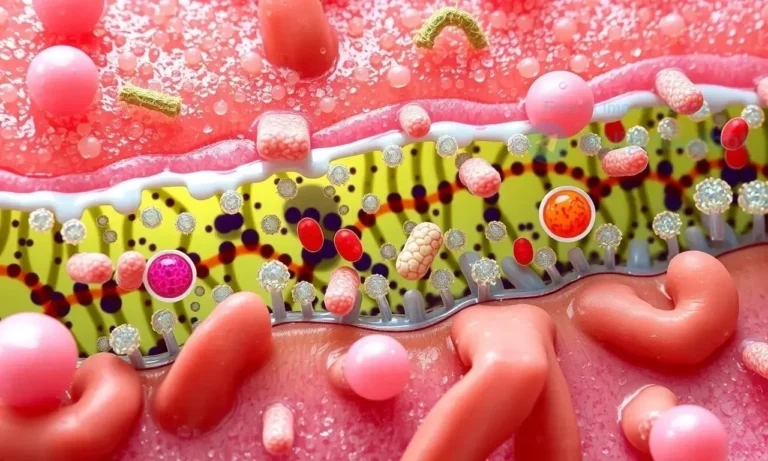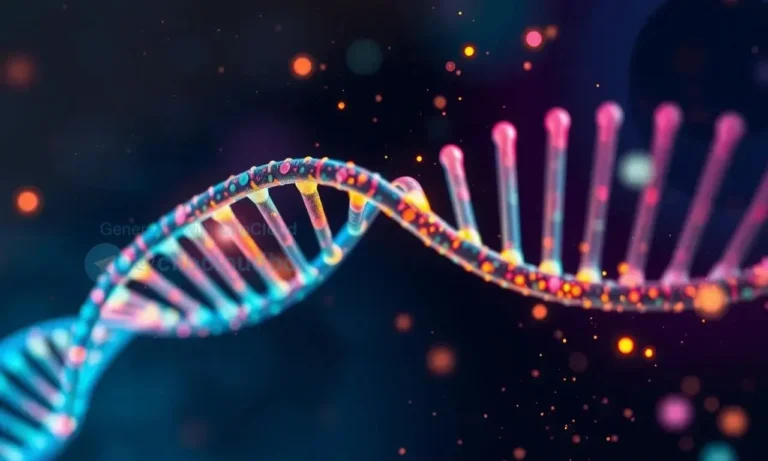Red Light Therapy: An Affordable Biohacking Tool for Health Optimization
Unlock your body’s potential with red light therapy, a cutting-edge biohacking tool now readily accessible for home use. This non-invasive treatment, also known as photobiomodulation, harnesses the power of specific red and near-infrared light wavelengths to stimulate cellular function and promote a wide range of health benefits. Discover how this affordable modality can revolutionize your wellness journey from the comfort of your own home.
Skin Rejuvenation with Red Light Therapy
Red light therapy offers a promising, non-invasive approach to skin rejuvenation, harnessing the power of light to stimulate cellular processes and promote a more youthful complexion. This treatment, often referred to as photobiomodulation, works by delivering specific wavelengths of red and near-infrared light to the skin, triggering a cascade of beneficial effects at the cellular level. These wavelengths penetrate the skin’s layers, reaching the fibroblasts responsible for collagen and elastin production – the essential building blocks for firm, supple skin.
As we age, collagen and elastin production naturally declines, leading to the appearance of wrinkles, fine lines, and sagging skin. Red light therapy aims to counteract this process by energizing the fibroblasts, encouraging them to produce more collagen and elastin. This increased production helps to plump up the skin, reducing the visibility of wrinkles and fine lines, and improving overall skin texture. The result is a smoother, more toned appearance, with a noticeable reduction in the signs of aging.
Beyond wrinkles and fine lines, red light therapy also addresses other skin concerns, such as age spots, sun damage, and acne scars. The increased cellular activity stimulated by the light can help to reduce inflammation, improve blood circulation, and promote faster healing. This can lead to a more even skin tone, a reduction in the appearance of blemishes, and a faster recovery from skin injuries. Red light therapy is a gentle treatment suitable for all skin types, offering a safe and effective way to rejuvenate the skin without the downtime or potential side effects associated with more invasive procedures.
Furthermore, the treatment can be conveniently administered at home with affordable red light therapy devices. These devices allow individuals to incorporate skin rejuvenation into their daily routines, offering consistent treatment and maximizing the potential benefits. Home use also provides greater control over treatment frequency and duration, allowing for personalization based on individual skin needs and goals. Whether you’re looking to address specific skin concerns or simply maintain a healthy, youthful glow, red light therapy offers a versatile and accessible solution.
With continued use, red light therapy can contribute to a more radiant and youthful complexion, making it a valuable tool in any skincare regimen. The ability to stimulate collagen production, reduce inflammation, and improve overall skin health makes this therapy a compelling option for those seeking natural and effective skin rejuvenation. By incorporating red light therapy into your routine, you can harness the power of light to unlock a healthier, more vibrant version of your skin.
Boosting Muscle Recovery and Athletic Performance
Red light therapy is emerging as a powerful tool for athletes and fitness enthusiasts seeking to optimize muscle recovery and enhance athletic performance. This non-invasive technique, also known as photobiomodulation, utilizes specific wavelengths of red and near-infrared light to penetrate deep into muscle tissue, stimulating cellular processes that promote healing and improve performance.
One of the key benefits of red light therapy for muscle recovery is its ability to reduce inflammation. Strenuous exercise often leads to muscle damage and inflammation, which can hinder recovery and contribute to delayed-onset muscle soreness (DOMS). Red light therapy helps to mitigate this inflammation by increasing blood flow and promoting the removal of metabolic waste products, allowing muscles to repair and rebuild more efficiently.
Beyond reducing inflammation, red light therapy also stimulates the production of adenosine triphosphate (ATP), the primary energy source for muscle contraction. By increasing ATP production, red light therapy can enhance muscle performance, allowing athletes to train harder and recover faster. This boost in energy can lead to improvements in strength, endurance, and overall athletic performance.
Furthermore, red light therapy can promote muscle growth by stimulating the production of growth factors and increasing protein synthesis. This can lead to increased muscle mass and improved muscle definition, making it a valuable tool for athletes looking to build strength and improve their physique. The therapy’s non-invasive nature and lack of side effects make it a safe and effective alternative to traditional recovery methods.
The convenience of at-home red light therapy devices allows athletes to easily incorporate this modality into their training regimens. Whether used before or after workouts, or even on rest days, red light therapy can provide consistent support for muscle recovery and performance enhancement. This accessibility makes it an increasingly popular choice for athletes of all levels, from weekend warriors to professional competitors;
By incorporating red light therapy into their routines, athletes can experience faster recovery times, reduced muscle soreness, and improved performance. This innovative technology offers a natural and effective way to optimize training and achieve peak athletic performance, making it an invaluable asset for anyone seeking to push their physical limits and reach their full athletic potential. The ability to enhance muscle function, promote healing, and improve overall athleticism makes red light therapy a game-changer in the world of sports and fitness.
Improving Sleep Quality with Red Light
Red light therapy is gaining recognition as a promising tool for improving sleep quality and combating sleep disorders. This non-invasive therapy utilizes specific wavelengths of red and near-infrared light to influence the body’s natural sleep-wake cycle, also known as the circadian rhythm. By regulating melatonin production and promoting relaxation, red light therapy can contribute to more restful and restorative sleep.
Melatonin, a hormone produced by the pineal gland, plays a crucial role in regulating the sleep-wake cycle. Exposure to blue light, commonly emitted from electronic devices, can suppress melatonin production, disrupting sleep patterns. Red light, on the other hand, has been shown to promote melatonin production, helping to regulate the circadian rhythm and improve sleep quality. By incorporating red light therapy into their evening routines, individuals can naturally enhance their body’s sleep-regulating mechanisms.
Beyond its impact on melatonin, red light therapy also promotes relaxation and reduces stress, which can significantly impact sleep quality. The calming effect of red light can help to quiet the mind and prepare the body for sleep, making it easier to fall asleep and stay asleep throughout the night. This can lead to more restful sleep and improved overall well-being.
Furthermore, red light therapy can improve sleep quality by enhancing cellular function and reducing inflammation. By optimizing cellular processes, red light therapy can help to reduce oxidative stress and promote overall health, which can indirectly contribute to better sleep. The therapy’s gentle and non-invasive nature makes it a safe and effective option for individuals seeking to improve their sleep without resorting to medications.
The convenience of at-home red light therapy devices makes it easy to incorporate this therapy into a bedtime routine. Whether used for a short period before bed or during the evening hours, red light therapy can provide consistent support for healthy sleep patterns. This accessibility makes it a viable option for individuals struggling with sleep challenges, offering a natural and effective way to improve sleep quality.
By utilizing red light therapy, individuals can harness the power of light to regulate their sleep-wake cycle, promote relaxation, and enhance their overall sleep quality. This innovative approach offers a drug-free solution for those seeking to improve their sleep and experience the numerous benefits of a good night’s rest. From promoting melatonin production to reducing stress and enhancing cellular function, red light therapy provides a holistic approach to sleep optimization, paving the way for better sleep and improved overall well-being.
Exploring the Benefits of Photobiomodulation
Photobiomodulation (PBM), also known as red light therapy, is a rapidly evolving field of therapeutic intervention that utilizes specific wavelengths of red and near-infrared light to stimulate cellular function and promote a wide range of health benefits. This non-invasive and painless modality is gaining recognition for its potential to address various health concerns, from skin rejuvenation and pain management to improved sleep and enhanced athletic performance.
At the cellular level, PBM works by interacting with light-sensitive chromophores within the mitochondria, the powerhouses of our cells. This interaction triggers a cascade of beneficial effects, including increased ATP production (the cell’s primary energy source), enhanced cellular signaling, and reduced oxidative stress. These cellular changes contribute to improved tissue repair, reduced inflammation, and enhanced overall cellular function.
One of the key benefits of PBM is its ability to promote wound healing and tissue repair. By stimulating collagen production and increasing blood flow to the affected area, PBM can accelerate the healing process and reduce scar formation. This makes it a promising treatment option for various injuries, including burns, wounds, and musculoskeletal injuries.
Furthermore, PBM has shown promise in pain management, offering a non-pharmacological approach to alleviating pain associated with various conditions, such as arthritis, back pain, and nerve pain. The therapy’s anti-inflammatory effects and ability to modulate pain signaling pathways contribute to its analgesic properties.
Beyond its therapeutic applications, PBM is also being explored as a tool for cognitive enhancement and neuroprotection. Emerging research suggests that PBM may improve cognitive function, protect against neurodegenerative diseases, and promote brain health. While further research is needed, these preliminary findings highlight the potential of PBM to impact brain health and function.
With the increasing availability of affordable at-home PBM devices, individuals can now experience the benefits of this innovative therapy in the comfort of their own homes. These devices offer a convenient and accessible way to incorporate PBM into daily routines, empowering individuals to take control of their health and well-being. The versatility and potential of PBM make it a promising modality for addressing a wide range of health concerns and optimizing overall health and wellness.






